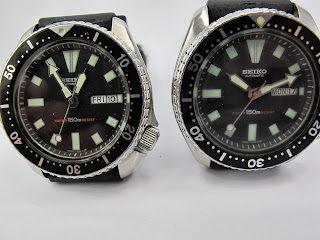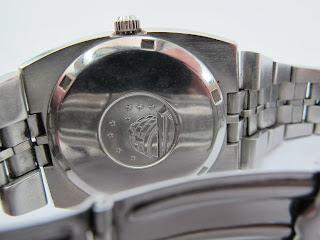Mido Commander Day-Date 8228
I blogged about Mido and its summarised history HERE. Here is another Mido Commander that is not Chronometer Certified. This is more a homage playing tribute to Rolex Day-Date President. Despite being a Rolex looks alike, the quality of a Mido can never be questioned.
What is unique with this Mido Commander is its monocoque stainless steel body. I.e. The case back and the case is a single piece. Therefore to open this watch, you need to remove the glass and the dial first. This Mido Commander is measuring 36mm in diameter excluding its crown. Like Rolex, it has fluted bezel.
Its acrylic crystal has a "Mido" engraved at the center and has a magnifying lens for the 3 o'clock date window. The dial is silver grey in colour and without any fancy wordings just silver colour emblems of Mido and Commander wordings. At the six o'clock hour baton is a proud statement of Swiss Made.
The Mido signed crown of this watch is semi concealed inside the case. It only protruded slightly out from the case.
Although this stainless steel bracelet looks like Rolex President bracelet, it is breathe with own characteristic.
The bracelet is very comfortable to wear and is easily adjustable by a small screw driver. Mido used small and short folding clasp rather than a hidden clasp.
The clasp is signed with the word Mido and it is not by engraving but by a more tedious machined embossing process.
The backcase is somewhat simple. It is engraved with the model number and the serial number as well as Mido and stainless steel.
I have not opened up this watch. Therefore I can only speculate that this watch must be using the ETA 2834-2 automatic movement beating at 28,800 bph. From my research by googling around.... yeap most stated 2834. Below is a photo shown the finishing of Mido signed ETA 2834-2:
I suspected this watch is from late 1980's or early 1990's. To my dismay, I can't recall when or where I picked this one up. Maybe is time to appreciate what I already have rather than what I want to pursue.............










.jpg)








































